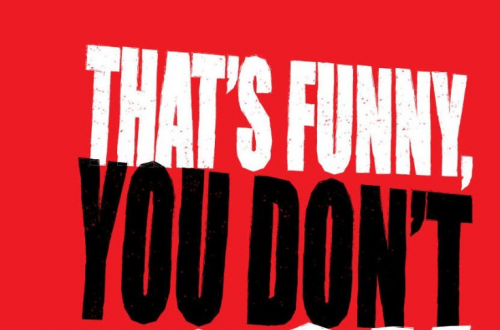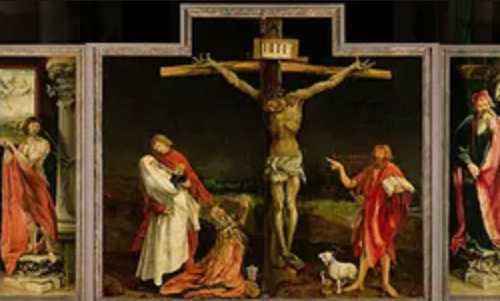This is a cross post from Under the Ocular Tree.
Phil at A Very Public Sociologist reminds us that Sunday would have been Karl Marx’s 195th birthday. This, he believes, is something well worthwhile commemorating. The way he has done so is to list his five favourite books on Marx and Marxism. He challenges us to also list books that have had an impact. What better way for me to do that in “honour” of this birthday than to also list five book on Marx and Marxism. For the sectarians I should clarify that: five books on Marx and people who claimed to be Marxist.
1. Leopold Schwarzchild, The Red Prussian: The Life and Legend of Karl Marx, (Pickwick Books, 1986)
In this book, originally published in Britain in 1948, one can get a true sense of the type of man Marx was. The following few sentences are extracted from pages 68-69 and are based on an account provided by Marx’s assistant, Carl Heinzen:
[Marx’s] most pleasing trait was his appreciation of good wine. Every evening they repaired to the inn to drink; and then, as they emptied one bottle after another, Marx became gay, jovial, and natural. When he was in a good mood, he amused himself time and time again with the same joke. He would say suddenly to someone at the table: “I am going to annihilate you,” and say it over and over again, enjoying himself tremendously
2. Richard Pipes, The Russian Revolution, (Vintage, 1990)
In this ground-breaking monumental study, Richard Pipes provides a convincing argument why the Russian Revolution was not a class uprising as Leninists would have people believe, but a coup d’état where a small minority with the use of terror and mass murder took control of government. The following short extract is from page 833:
On August 8 [1918, Trotsky] ordered that, for the protection of the railroad line from Moscow to Kazan, concentration camps be constructed at several nearby localities to isolate such “sinister agitators, counterrevolutionary officers, saboteurs, parasites and speculators” as were not executed “on the spot” or given other penalties…. [On August 9, 1918, Lenin] ordered that mutinous “kulaks” be subjected to “merciless mass terror”- that is executions – but “dubious ones incarcerated in concentration camps outside the cities.”
3. Aleksandr I. Solzhenitsyn, The Gulag Archipelago 1918-1956: An Experiment in Literary Investigation, (Harper Perennial Modern Classics, 2007)
Strictly speaking this is three books, as this magisterial work comprises three volumes. For the purpose of this list I count it as one entry. This report of life and death in the Soviet prison system that began under Lenin and substantially expanded under Stalin is chilling. Millions died under Stalin of which a substantial number of people were killed via the judicial system. The short extract below is from page 564 of that first volume:
General-assignment work – that is the main and basic work performed in any given camp. Eighty percent of the prisoners work at it, and they all die off. All. And then they bring new ones in to take their places and they again are sent to general-assignment work. Doing this work, you expend the last of your strength. And you are always hungry. And always wet. And shoeless. And you are given short rations and short everything else. And put in the worst barracks. And they won’t give you any treatment when you’re ill.
4. Jung Chang and Jon Halliday, Mao: The Unknown Story, (Jonathan Cape, 2005)
This highly acclaimed biography of the Chinese leader is superbly researched. The death and destruction wrought by Mao brought Communist killings to a new high. Chang and Halliday document the evidence against this Communist monster. The extract below is from pages 456-458:
Close to 38 million people died of starvation and overwork in the Great Leap Forward and the famine which lasted four years….Mao knowingly starved and worked these tens of millions to death…. Death, said Mao, “is indeed to be rejoiced over… We believe in dialectics, and so we can’t not be in favour of death.”…. “Deaths have benefits,” he told the top echelon on 9 December 1958. “They can fertilise the ground.”….When he was in Moscow in 1957, he had said: “We are prepared to sacrifice 300 million Chinese for the victory of the world revolution.”
5. John Barron and Anthony Paul, Peace with Horror: The Untold Story of Communist Genocide in Cambodia, (Hodder and Stoughton, 1977)
This was the first book that came out detailing the horrors of the Khmer Rouge. It is largely based on eye-witness accounts. The killings started as soon as the Khmer Rouge got to power with the forced exodus of the population from the cities to the countryside. The extract below is from page 116:
The killing during the great exodus was all the more terrifying because so much of it was unpredictable and pointless. A former truck driver, Thiounn Kamel, was swept up in the throngs pushed out of Phnom Penh on National Highway 1. “When I couldn’t move because of the crowd, I stopped on the side of the road. That time there was a truck loaded with armed Khmer Rouge. When their truck also couldn’t move, they just shot at the people to clear the way and killed some of them. It was savage.”


